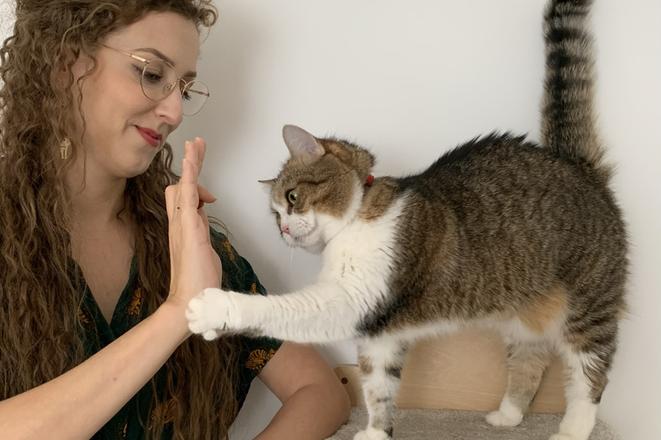Cats in cute costumes, in water, or eating food.
Unless you have somehow managed to never go on the internet or social media, you will have seen these videos. A friend will have shared one, or they will just seem to pop up randomly almost from nowhere.
But while at first glance these videos may appear to be showing our beloved four-legged friends in funny situations, they can often be anything but amusing for the animals involved.
"I report a lot of videos I come across every day because many of them show cats being treated badly, or show them in situations in which I see them conveying signs of fear, frustration, or pain," says Noema Gajdoš Kmecová, a cat behaviour researcher from the University of Veterinary Medicine and Pharmacy in Košice and author of Mačkast, the first Slovak podcast about cats.
"Some of these practices are borderline animal abuse," she adds.
In an interview with the Slovak Spectator, she talks about what we still don't know about cats, the nature of cat research, and what she and her colleagues discovered in a recent study published in a major journal.

To stay up to date with what scientists in Slovakia or Slovak scientists around the world are doing, subscribe to the Slovak Science newsletter, which will be sent to readers free of charge four times a year.
We know little
Interaction between cats and humans goes back thousands of years and because of this fact, we might think that we know the animal very well. The truth is just the opposite, though.
"There are more things about cats we do not know than we do," explains Gajdoš Kmecová.
“We understand a lot about their biology and physiology. For example, we know that smell and olfactory signals are very important to them, but we do not know what certain pheromone fractions are for, although we know them at a chemical level.”
Another area which remains largely unexplored - and this applies to other species of animals as well - is their brain and the processes that go on inside it.
"Currently, the hot topic in this field of study is pain and how cats convey it through behaviour. This is an area that has not been explored much. Generally, I study how cats behave towards each other, because the number of them living in households is increasing," Gajdoš Kmecová says, adding that cats use their behaviour to communicate what is happening in their bodies.

Problematic videos
If you've come across cat videos on social media, you've probably seen some that offer explanations for the various behaviours they display. But to what extent can such videos be trusted?


 Cat behaviour researcher Noema Gajdoš Kmecová and her cat. (source: Archive of N. G. K.)
Cat behaviour researcher Noema Gajdoš Kmecová and her cat. (source: Archive of N. G. K.)